As some stories go, the idea of building a giant statue of the town's lumberjack son was conceived over sharing a pint (or two). 737 man hours, and 2.5 tons later, a national tourism legend was proudly born. After more than 50 years of towering Lake Bemidji, the statues were officially honored by the National Parks Service as a cultural resource worthy of preservation, adding them to the National Register of Historic Places. Today, the statues of Paul Bunyan and Babe the Blue Ox are recognized as the second most photographed roadside attraction in the nation.
Photos courtesy of the Beltrami County Historical Society and LakesnWoods.com
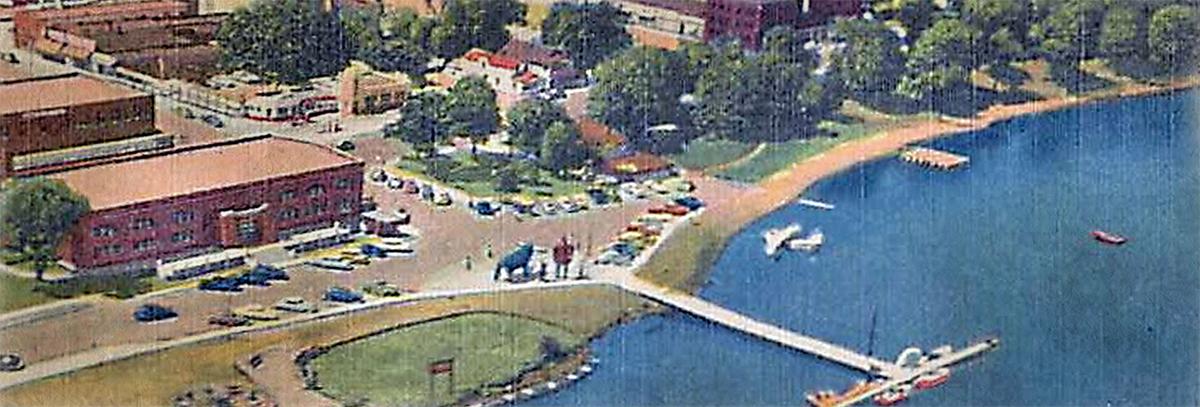
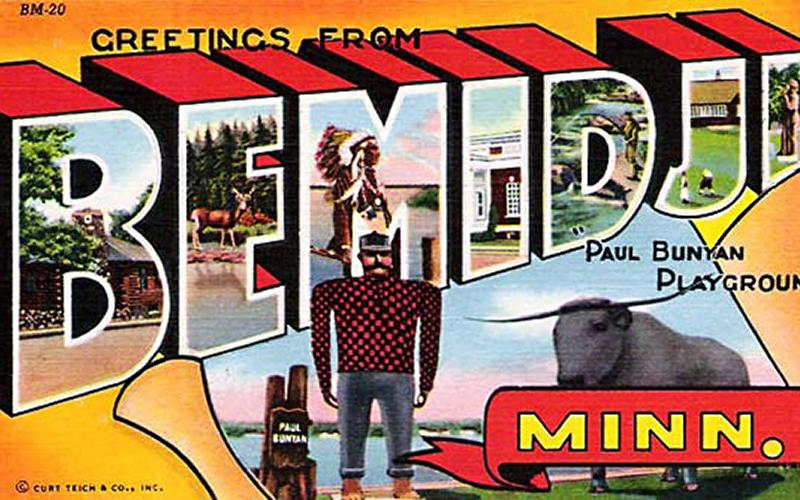
It was 1936 when Bemidji's civic organizations and businesses, searching to stimulate tourism, decided to sponsor a winter carnival to promote the city's resources for winter sports. The carnival idea became a reality on January 14, 1937 but with a "unique" promotional twist- the unveiling of the giant concrete statues of Paul and Babe, designed to honor the town's logging heritage by serving as mascots for the festivities.
The statues were designed and built by the Bemidji residents. Cyril M. Dickinson of the Dickinson Construction Co. was "the mastermind" behind the Bunyan figure (that looked suspiciously like then mayor, Earl Bucklen), while Jim Payton, manager of the local power company, supervised construction of Babe.
737 man-hours went into the construction of Paul. Designed to withstand high velocity winds, the statue was constructed using a wood framework above footings over which reinforcing bars formed the towering shape. The footings, reinforced with heavy steel, continue up through the legs of the statue, with heavy steel laths over the reinforcing bars and cement stucco atop.
Upon completion, Mr. Dickinson furnished the following statistics:
Concrete footings to water level: 5 1/2 tons
Weight of statue above footings: 2 1/2 tons
Height of statue: 18 feet
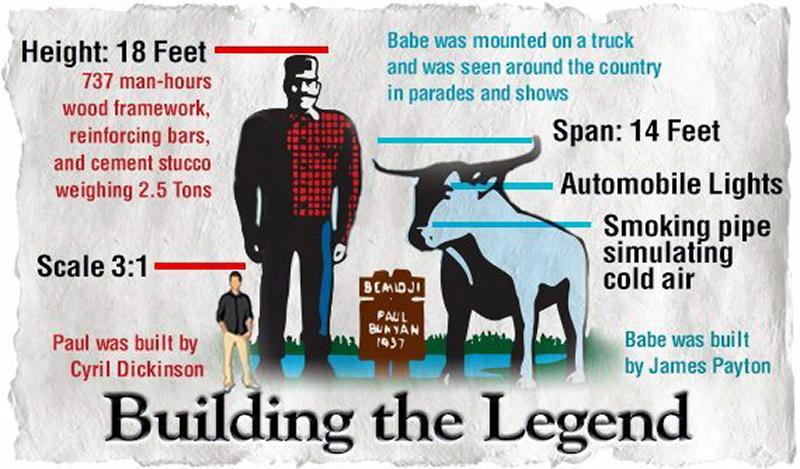
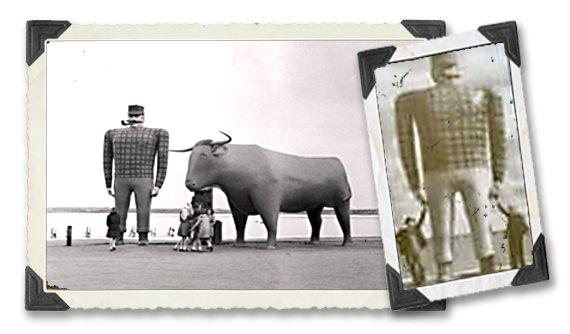
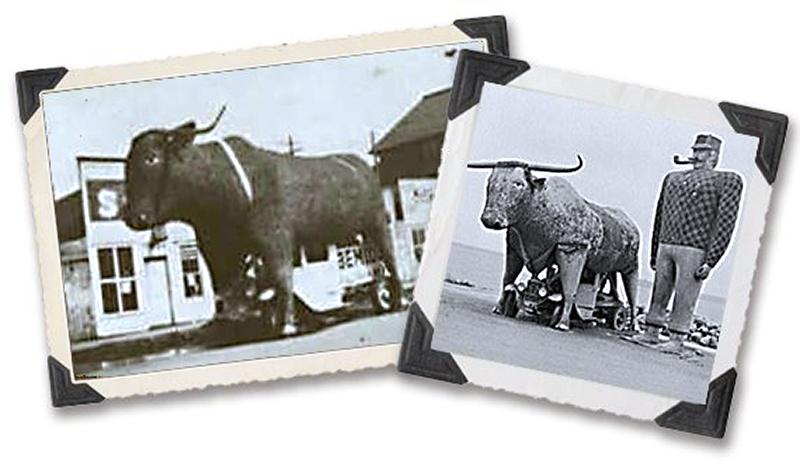
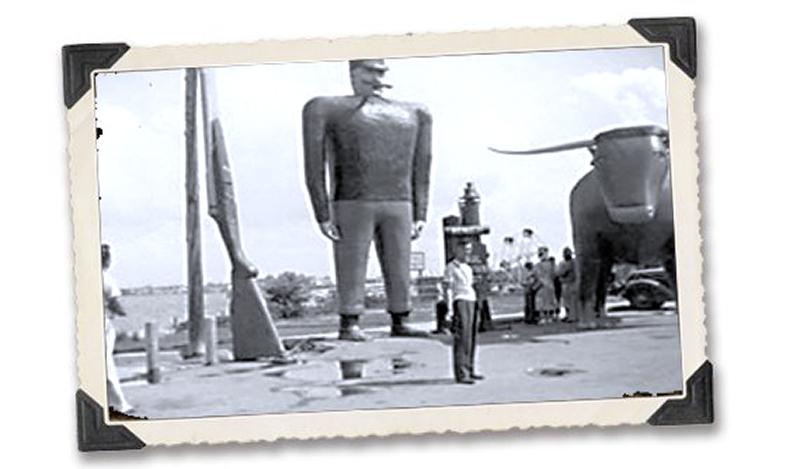
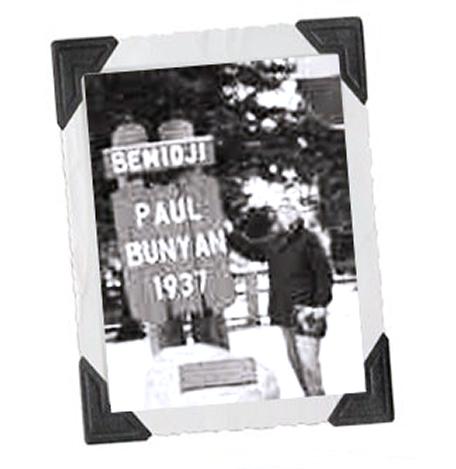
Nearby, the Headwaters Logging Camp owned a large pair of oxen, the largest of which was used as the model for the statue of Babe. Measurements and pictures were taken with detailed drawings made, scaling the ox to a three-to-one basis, the same formula used for the Paul Bunyan statue. These scaled drawings were followed in precise detail, with the exception of the distance between the front legs. This space was widened to allow a truck to fit and be operated beneath the statue. The construction of the ox was a skeleton of wooden ribs, sawed and nailed together at a local boat company plant. This wood was then covered with wire lath. On top was stretched a padding of fiber and wool, as was used to insulate refrigerators. Canvas was then stretched over this frame.
A smoking pipe, built into the nostrils, created the impression that the ox was breathing in the cold air. The eyes were made of automobile tail lights and connected to a battery. The horns, made of tin, were 14 feet across.
Both statues became overnight tourist sensations, garnering a full-page spread in Life Magazine. Although the Paul statue established immediate residence at its present location in a park overlooking the city's busiest intersection, Babe initially led a more adventuresome existence. Mounted on a Model T Ford automobile, Babe was paraded through Bemidji during the winter carnival. Babe later journeyed to St. Paul to take part in that city's 1937 winter festival, and then onto the Twin Cities State Fair. In 1938, Babe was dismantled from its mobile chassis and placed on permanent display in Bemidji next to the figure of Paul Bunyan.
In the original setting, Paul had a shotgun that rested beside him for many years. Made of wood, it deteriorated over time and was removed. A replica of the gun is on display in the Tourist Information Center.
It was later that through the National Youth Administration program, Robert E. Jorstad was assigned the job of building the sign, spending nearly 20 hours during January and February of 1941.
In time, over-sized statues became a copied device for promoting tourism. But Bemidji and its' statues of Paul and Babe are recognized as "pioneers in the field." A highly popular tourist attraction, the statues have received worldwide recognition, included in such diverse publications as Gebhard and Martinson's A Guide to the Architecture of Minnesota and the Minnesota Department of Transportation's "Minnesota State Highway Map," just to name just a few. In 1988, the National Parks Service officially recognized the statues as a cultural resource worthy of preservation, adding Paul & Babe to the National Register of Historic Places.
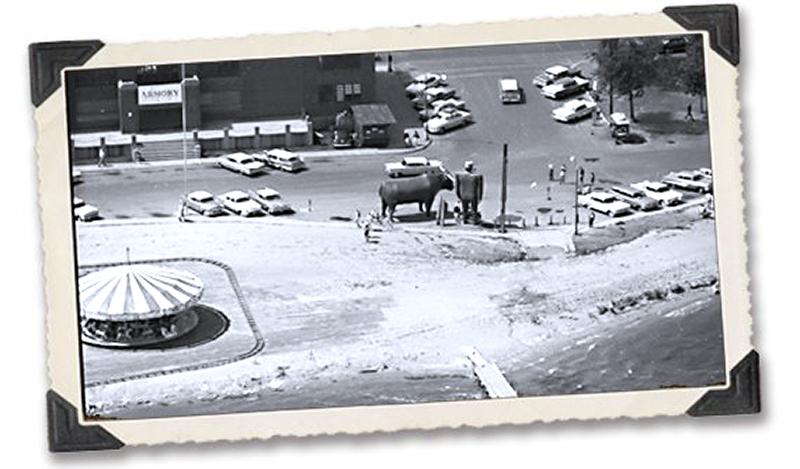
Show Some #BemidjiLove
Give us a follow to find inspiration for your next visit and share your own adventures!
